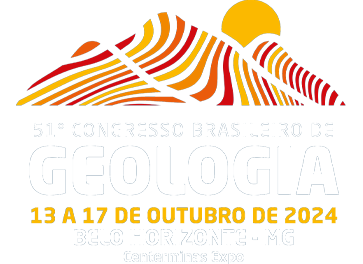Dados da Submissão
Título
ASSESSING THE ROLE OF PRIMARY AND MYLONITIC FABRICS THROUGH STRUCTURAL GEOLOGY AND PETROLOGY OF THE PANORAMA SUITE GRANITES, SÃO GABRIEL BLOCK, SOUTHERNMOST BRAZIL
Texto do resumo
The Panorama Suite (PS) composes a NE-striking, elongate granitic batholith (~600 km²) in the São Gabriel Block (SGB), western part of the Dom Feliciano Belt central sector, southernmost Brazil. The batholith is partly covered by Paleozoic sedimentary rocks at its south and western portions and limited by the dextral transcurrent Palma Shear Zone to the east. This integrated study, developed through geological-structural mapping and petrology, aims at better understanding planar and linear features within the unit, working towards the discrimination of hipersolidus and subsolidus structures from the ones generated under lower temperatures, as well as its overall relationship with the regional SGB tectonics. The PS comprises the most voluminous Panorama Granite (PG) and the Passo da Areia Granite (PAG), of subordinate volume. Their common characteristic is the presence of primary euhedral titanite as a diagnostic accessory phase and a sub-horizontal, mostly SE-dipping, primary planar fabric (S0), along which textural and compositional varieties alternate. This foliation commonly bears a mineral lineation rarely accompanied by stretching. The stretching of quartz and feldspars exhibited on the S0 planes gives rise to an S0-1 fabric whose meaning is not yet fully understood. The magmatic fabric of the suite is partly transposed by a NE-striking, sub-vertical mylonitic foliation (S1) registered in some sectors of the unit. Locally, the suite contains tabular gneiss xenoliths. The PG comprises biotite monzo to syenogranites (M’ 3-7%) of fine- to medium-grained allotriomorphic texture, locally showing scattered feldspar phenocrysts. Garnet is rarely observed in the most differentiated varieties. Discontinuous elongate biotite aggregates mark the S0 foliation. The lineation is given mainly by elongate aggregates of equant quartz and feldspar grains and subordinately by the shape alignment of feldspar phenocrysts. The PAG comprises porphyritic, hornblende-biotite monzo to syenogranites (M’ 8-12%) with K-feldspar and plagioclase phenocrysts in a medium- to coarse-grained hypidiomorphic groundmass. Aligned biotite lamellae and feldspar {010} prismatic faces define the S0 foliation. The long axes of phenocrysts mark a poorly-developed lineation. The primary fabric folding and displacement indicate a dextral shear sense along S1 planes, which generally matches the axial plane of the folds. Preliminary data suggest that the mylonitic deformation of the Panorama Suite is related to dextral movement along the transcurrent Palma Shear Zone. Unraveling the nature of the Panorama Suite magmatism is a work in progress. However, preliminary field data do not indicate a gradation between the granites. Ongoing petrological, geochemical, and geochronological studies combined with detailed structural work will contribute to establishing the connection between shear zones and magmatism in the SGB.
Palavras Chave
Neoproterozoic; Magmatism; shear zones; magmatic structures.
Área
TEMA 19 - Magmatismo e Processos Petrogenéticos
Autores/Proponentes
Douglas Heineck Leães, Maria De Fátima Bitencourt, João Eduardo Figueiredo Silva
